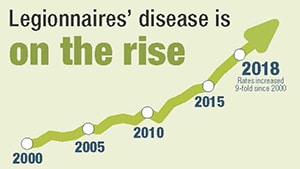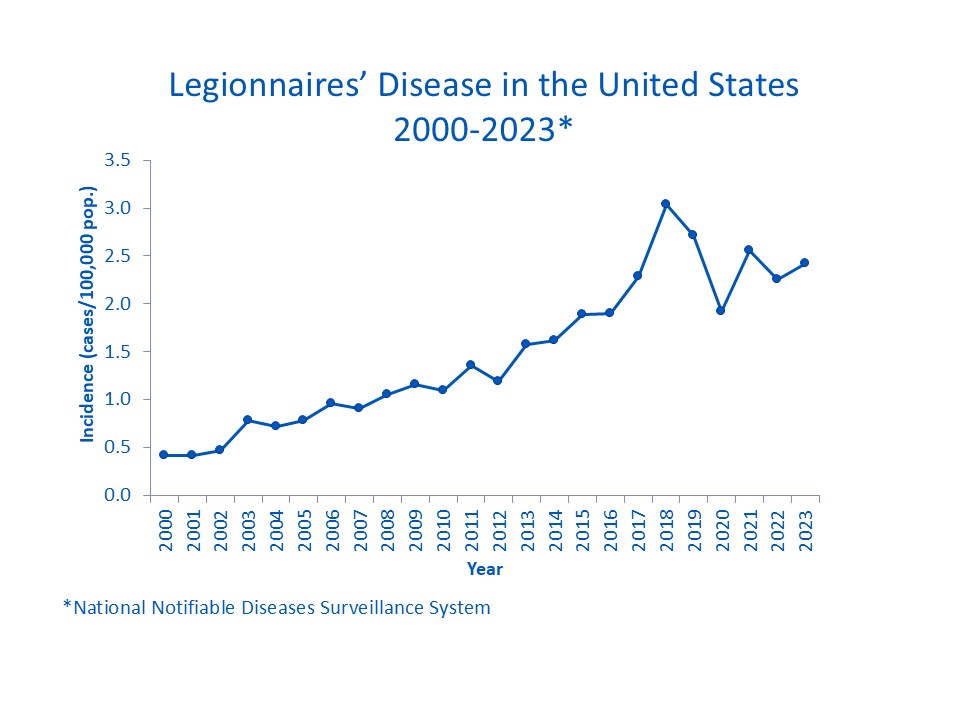Key points
- Legionellosis (Legionnaires' disease and Pontiac fever) is a nationally notifiable condition in the United States.
- CDC conducts national surveillance for legionellosis using two surveillance systems.
- View the most recent data and trends for Legionnaires’ disease.

Data systems
Legionnaires' Disease Cluster, New York City
The NYC Health Department is currently investigating a community cluster of Legionnaires' disease.
Learn more about which ZIP codes are affected, who's most at risk, and when to seek medical attention: Legionnaires' Disease - NYC Health
CDC monitors legionellosis cases through two surveillance systems at the national level.
How the data are interpreted
Disease trends
In general, reported cases of Legionnaires' disease have been increasing since the early 2000s, with a peak in 2018. While reported cases dropped during the first year of the COVID-19 pandemic, they rebounded in 2021.

Some groups have higher incidence rates
Rates of reported cases of Legionnaires' disease are highest in
- Black persons
- Males
- Older adults
- Northeast and Midwest regions
- Summer and fall months
Data reporting
Data from surveillance systems were combined to provide a more comprehensive understanding of the national burden of Legionnaires' disease. The following surveillance reports provide a descriptive summary of the reporting and burden of Legionnaires' disease within the United States.
Report topics include:
- Case count and incidence
- Seasonality and geographic distribution
- Demographic characteristics
- Potential exposure sources
- Disease severity indicators
- Diagnostic laboratory test results
Data definitions
The Council of State and Territorial Epidemiologists released the most recent case definition for legionellosis in 2020.
Strong surveillance helps to quickly identify new cases, epidemiologic links between cases, and the need for outbreak investigations.
